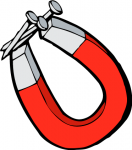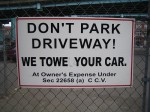 Email is quick, easy, and fairly cheap. Done right, it’s a great way to get more leads and more sales. Done wrong, you can annoy your customers or get labeled a spammer.
Email is quick, easy, and fairly cheap. Done right, it’s a great way to get more leads and more sales. Done wrong, you can annoy your customers or get labeled a spammer.
Here are five ways to get improve your email response rates.
1. Tweak your landing page
If you don’t have one, build one. You want a dedicated page built specifically to match your offer. The headline, colors, layout, and typeface should all be consistent with your email’s look and feel.
Then, change the colors of the headlines, the type, or the buttons. Move the buttons around and experiment with the number of fields in your forms. Test different button text to see which gets the highest response.
2. Change the price
This doesn’t just mean the actual amount, but how you present it. The way you state the cost can make a big difference in how people react (and how much they buy). Test different versions such as $500 upfront in a single payment, or two payments of $250 each. Or, try offering a $20 savings against 10% off. Even if it works out to the same final price, the response rate is likely to be different.
Percentages are generally harder to figure out. Try a dollars-off offer instead. Or, test them against each other to see which performs better.
3. Pre-sell the offer
Use the text of your email to describe exactly why you’re sending your email. Tell your readers what they’ll get, and why they will want to have it. Make them eager to learn more, even before they click through to the landing page.
4. Make it urgent
Explain why your readers should click right now, rather than waiting, to get your offer. You can do this by explaining that you can only take X number of customers or that the early-bird price ends soon. Just make the reason legitimate, such as a limited print edition or the physical size of a room. Nobody runs out of e-books.
5. Write better bullets
Make them short, compelling, and easy to scan. Put the benefit at the beginning, and use strong words with built-in benefits. Words such as “get”, “best”, “worst” (yes worst), or numerals. Or ask a question that your readers will want to answer “yes” to. Marketing to people who want to lose weight? Tell them they can “get fit in 20 minutes a day.” If you’re selling a guide for urban gardeners, point out the list of “local garden centers that deliver.”
Photo:YtseJam


 Email is quick, easy, and fairly cheap. Done right, it’s a great way to get more leads and more sales. Done wrong, you can annoy your customers or get labeled a spammer.
Email is quick, easy, and fairly cheap. Done right, it’s a great way to get more leads and more sales. Done wrong, you can annoy your customers or get labeled a spammer. Do you ever wonder if people actually read your ads? Would you like to get more readers (and more orders) from your ads?
Do you ever wonder if people actually read your ads? Would you like to get more readers (and more orders) from your ads? Getting a lot of bounces? Are people abandoning your contact forms?
Getting a lot of bounces? Are people abandoning your contact forms?